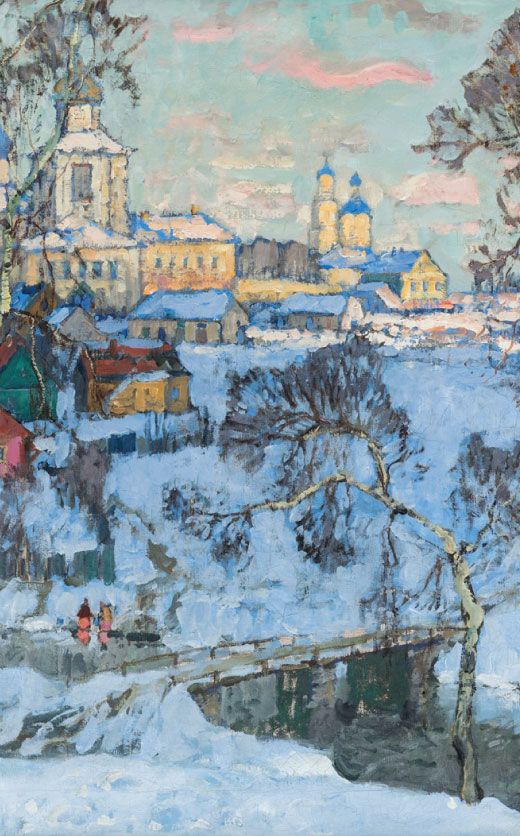MARONIEZ Georges ( 1865 - 1933 ) - Oil on Canvas Painting
Lot 50
About Seller
1stbid
232 E 59th St
New York, NY 20007
United States
1stbid is a leading auction house specializing in authentic antique and vintage hand-woven rugs, as well as a curated selection of objets d'art from around the world. Our collection is carefully hand-picked and assessed by proprietor Victor Mashihi, whose family has been in the business of selling r...Read more
Estimate:
$10,000 - $12,000
Absentee vs Live bid
Two ways to bid:
- Leave a max absentee bid and the platform will bid on your behalf up to your maximum bid during the live auction.
- Bid live during the auction and your bids will be submitted real-time to the auctioneer.
Bid Increments
| Price | Bid Increment |
|---|---|
| $0 | $50 |
| $1,000 | $100 |
| $2,000 | $250 |
| $5,000 | $500 |
| $10,000 | $1,000 |
| $20,000 | $2,000 |
| $50,000 | $5,000 |
| $200,000 | $25,000 |
| $500,000 | $50,000 |
About Auction
By 1stbid
Mar 1, 2025
Set Reminder
2025-03-01 14:00:00
2025-03-01 14:00:00
America/New_York
Bidsquare
Bidsquare : Edward Davidson Estate Art Auction - No Reserve Lots - Day 1
https://www.bidsquare.com/auctions/fine-rugs-of-chevy-chase/edward-davidson-estate-art-auction---no-reserve-lots---day-1-18054
Join us on Saturday, March 1, 2025, at 2:00 PM EST for a prestigious estate art auction featuring works from Edward Davidson (California). Discover fine art, paintings, sculptures, and collectibles spanning European, Russian, and American masterpieces. March 1, 2025 | 2:00 PM EST Online & In-Gallery Bidding Preview by Appointment www.1stbid.com info@1stbid.com | +1-917-623-6308 Don’t miss this exclusive event! 1stbid info@1stbid.com
Join us on Saturday, March 1, 2025, at 2:00 PM EST for a prestigious estate art auction featuring works from Edward Davidson (California). Discover fine art, paintings, sculptures, and collectibles spanning European, Russian, and American masterpieces. March 1, 2025 | 2:00 PM EST Online & In-Gallery Bidding Preview by Appointment www.1stbid.com info@1stbid.com | +1-917-623-6308 Don’t miss this exclusive event! 1stbid info@1stbid.com
- Lot Description
MARONIEZ Georges ( 1865 - 1933 )
The return of the fishermen.
Oil on canvas signed lower left.
65 x 81 cm
Certificate of authenticity.
Museums: Boulogne-sur-Mer, Lille, Valenciennes, Douai, Cambrai, New York.
Georges, Philibert, Charles MARONIEZ , born in Douai in 1865 and died in Paris in 1933 , French painter. The son of an industrialist, a sugar manufacturer in Montigny-en-Ostrevent, Georges Maroniez showed a taste and gifts for drawing and painting at a very early age. His father encouraged him but also asked him to study law, as the profession of artist was little considered at the time. At the end of his studies, he began a career as a magistrate, successively in Boulogne-sur-Mer (1891), Avesnes-sur-Helpe (1894) and Cambrai (1897). In parallel with the faculty of law, he assiduously attended the academic courses of the School of Fine Arts in Douai, and in 1880 became a student of Pierre Billet (1837-1922) in Cantin. There he met the painter Adrien Demont (1851-1928), son-in-law of the famous Jules Breton (1827-1906). On the latter's advice, he presented his first painting at the Salon de Douai, then in 1887 in Paris Soleil couchant ˆ Esquerchin. On holiday in Wissant, he became friends with the couple Adrien Demont and Virginie Breton, with whom he discovered the landscapes of the coast. Every summer for several years, around the Demont-Bretons, he met his friends from Douai: Fernand Stievenart, Henri and Marie Duhem, Felix Planquette. This was the era of Wissant's group. We will also talk about the Opal Coast school, including painters from Berck who were friends of the Demont-Bretons, one of the most illustrious being Francis Tattegrain (1852-1915). Thanks to the presentation and sponsorship of Adrien Demont, Georges Maroniez became a member of the French Artists in 1889. Inventive, curious and practical at the same time, he became interested in photography and invented a first handheld camera, then a second, even simpler one, the Sphynx, which he patented in 1891. The shots taken with this portable camera are invaluable for him to capture scenes of the seaside: the departure and return of fishermen, the unloading of fish... scenes that he then reproduced on canvas in the studio. He also brought back from his many trips to the Mediterranean (North Africa, Italy, Palestine, Egypt...) multiple photographs on glass plates. His creativity was constantly awakened, so he imagined and built a cinematographic camera working with Lumire film and in which the trepidation of the images was suppressed, a camera that he presented in January 1899 to the Photographic Society of https:--urldefense.proofpoint.com-v2-url?u=http-3A__Cambrai.Il&d=DwIFaQ&c=euGZstcaTDllvimEN8b7jXrwqOf-v5A_CdpgnVfiiMM&r=CRq-PfZUmXdU_LJTMtvgvq8Vnk2VJVxATlZP6CXg_RA&m=ILWlVwOduJJcQ1wGPdL9CCZWrX33nwkRzUNnkqamQvIv9UzGt9yaNS9NcikrQX3u&s=YpM2yNZw6zO1VMvdCIJqc4ckUsZeMgIdJwqw_2bOoCA&e= married Jeanne Dutemple in 1899 in Cambrai; the couple had three daughters, Germaine, Simone and Madeleine.In 1905, the success of his painting and the consequences of the Combes ministry decided him to resign from the magistracy and devote himself entirely to his art. Mobilised in 1914, he was made a Knight of the Legion of Honour in July 1918. His studio was looted and his wife deported during the occupation of the North. The Maroniez family settled in Paris, rue dAguesseau, in 1919. Now inspired above all by Brittany, Georges Maroniez's painting is very popular in France and abroad; He died of a heart attack in Paris on December 11, 1933. He was buried in the family vault in Cambrai.As a young teenager, Georges Maroniez began to paint in the vicinity of Douai while Corot, Millet, Courbet, the great masters of landscape, died. Initially a painter of the countryside and rural life, in a naturalistic, very classical, even academic style, he then evolved in contact with the Wissant school towards seascapes, more precisely landscapes and scenes of the banks of thehttps:--urldefense.proofpoint.com-v2-url?u=http-3A__mer.Il&d=DwIFaQ&c=euGZstcaTDllvimEN8b7jXrwqOf-v5A_CdpgnVfiiMM&r=CRq-PfZUmXdU_LJTMtvgvq8Vnk2VJVxATlZP6CXg_RA&m=ILWlVwOduJJcQ1wGPdL9CCZWrX33nwkRzUNnkqamQvIv9UzGt9yaNS9NcikrQX3u&s=H9HmuLkXcwEvkqQjwgMtCr9UoKZWn50ULLtiUD-yS4s&e= excelled in this genre to the point of being presented as a painter of the sea, which he rejected. A painter of the languor and anger of the sea, he represents the life of seafarers; In coastal landscapes and port scenes, he strives to capture the daily life of humble fishermen and their families, the arduous work, the courage, the waiting. He is also the painter of a rural and prosperous republican France after more than 40 years of peace, and of a civilization that is still not very mechanized, of horses and sailing boats. A world that would disappear with the First World War: from the 1920s, motor trawlers would eliminate the fleets of fishing sailboats that had provided it with so many subjects for paintings. His work is abundant and scattered throughout France, Europe and North America. It is estimated that he has more than 800 paintings, to which are added thousands of studies, sketches and preparatory drawings, as well as his numerous photographic shots. Several works are in the museums of the North, mainly those of Cambrai and Douai.
The item you're interested in is in good condition. Please note, however, that all lots are sold "AS IS." Condition reports are provided as a courtesy and do not guarantee the item's condition, quality, or authenticity. The absence of a report does not imply perfect condition. For further information or assistance, contact us at info@1stbid.com or +1-917-623-6308. Our team is here to help. Thank you for your interest in our auction.Condition
- Shipping Info
-
Please contact us ahead of any of our auctions regarding any available shipping options we may have. All shipping, packaging and handling costs are the responsibility of the bidder/purchaser/buyer.
-
- Payment & Auction Policies
-
Available payment options
-
- Buyer's Premium



 EUR
EUR CAD
CAD AUD
AUD GBP
GBP MXN
MXN HKD
HKD CNY
CNY MYR
MYR SEK
SEK SGD
SGD CHF
CHF THB
THB


















